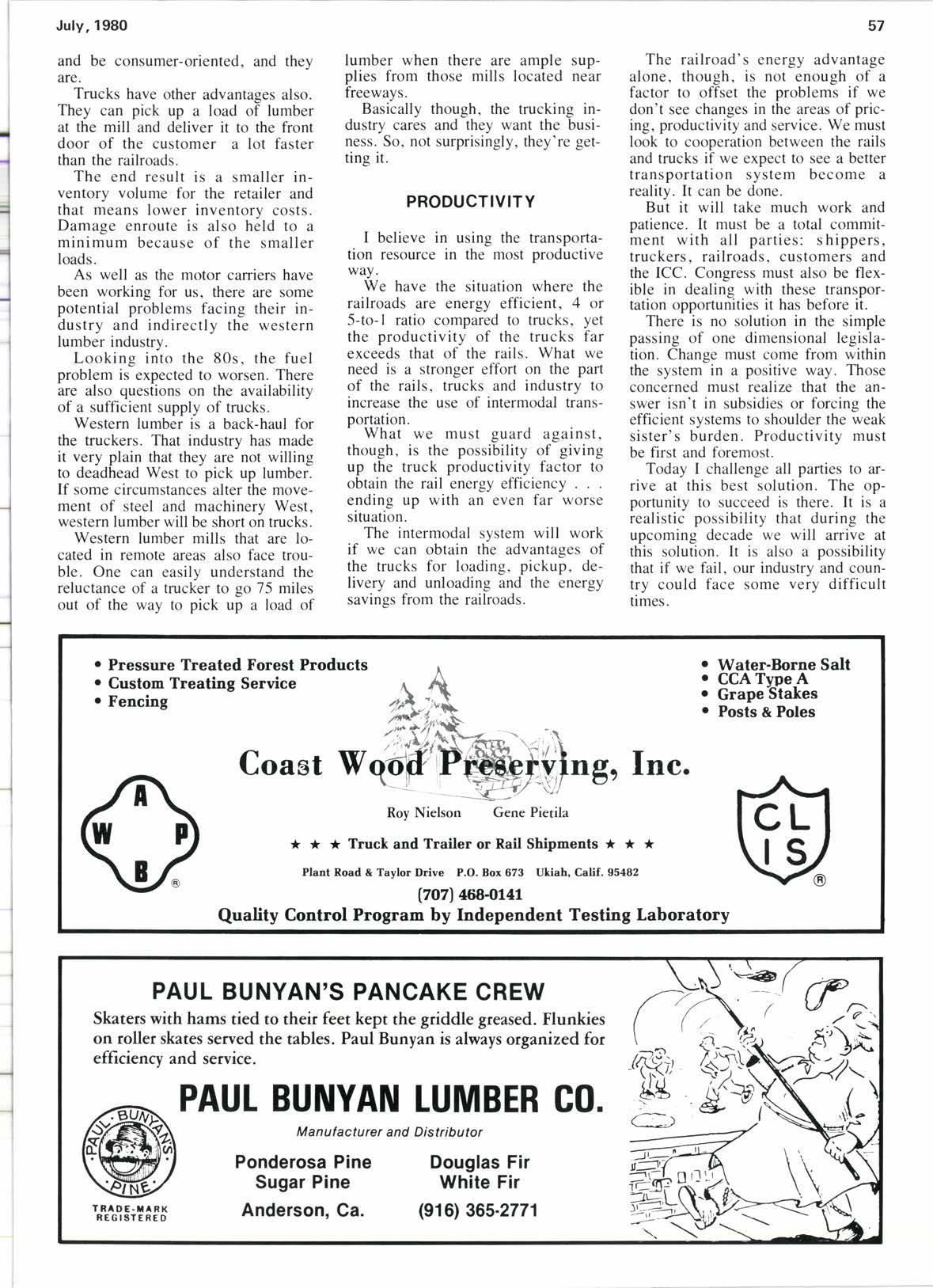
2 minute read
RRs and the recession
T HE cautiously optimistic eco- I nomic outlook of recent times has been rudely rebuked by the unpleasant fact that the West is at last feelins the hammerlock grip of the recession-that is throttling the rest of the country.
Businesses must operate at peak efficiency to maintain their profitable standing, and they must also be constantly on the hunt for improved methods of providing goods and servlces.
One of the more prominent and prosperous companies is the Santa Fe Railway, subsidiary of Chicagobased Santa Fe Industries, a company that has been doine business with Westerners for almosi a century.
The recent energy crunch has brought the railroads' fuel efficiency into focus, and large and profitable carriers such as the Santa Fe have moved into the limelisht of the American transportation pidture.
Santa Fe carries lumber products in boxcars or on flatcars that are designed specifically to minimize damage to freight during shipping. During foul weather the lumber on flatcars can be protected from the elements by heavy protective covering that is strapped down by steel bands.
Bulkhead flatcars, a sort of skeleton boxcar with the sides and top removed, are used to carry plasterboard and other lumber products that can be used to make a wide variety of products.
The railway also moves a large amount of cement and related products in 70-ton capacity, covered hopper cars. Some of the areas served receiving these products include Southwestern Portland Cement Company at Victorville, Ca., Kaiser Cement Co. at Cushenberry, Ca., and Monolith Portland Cement Co. at Monolith, Ca.
One of the most important aspects of freight transportation is for the carrier to insure that the commodities arrive at the final destination in the same undamaeed condition in which they were shipiped. To help attain this goal, Santa Fe, in 1975, implemented a program called Efficient Car Handling Operations (ECHO) designed specifically to reduce overspeed couplings, one of the major causes of freisht damase.
l'he far-riaching program uses radar guns, thorough testing and research and most importantly a lot of company pride to encourage safer switching and improved shippercarrier relations. The success of the ECHO program has helped Santa Fe trim its claims to revenue ratio (dollars paid in claims to freight revenue) from $1.70 in 1975 down to $1.02 in 1979. With the Santa Fe's revenues being well over $l billion in 1979, that savings translates into better service for thi shippers, and lower prices for the consumers.
Story at a Glance
Railroad stresses damage control to ensure commodities arrive in the same condition they were shipped . . electronic guns, special rail cars and other equipment help save customers money.
Management at Santa Fe is quick to point out people are the railway's most important asset. "People deliver the goods, provide the service to our customers in Southern California," says H.D. Fish, general manager for the Coast Lines, a territory stietching from Western New Mexico to San Francisco and San Diego. "We're proud of our people, they're proud of our railroad and when there's a iob to be done we do it. We'd like to-think we do it better than anyone else."
As the nation begins to come to terms with the reality of a recession, Santa Fe is confident that people will perceive it and other profitable railways as part of the solution and not a part of the problem. Santa Fe's tracks and equipment have never been in better condition, putting the railway in a position to offer more and better service than ever before.











